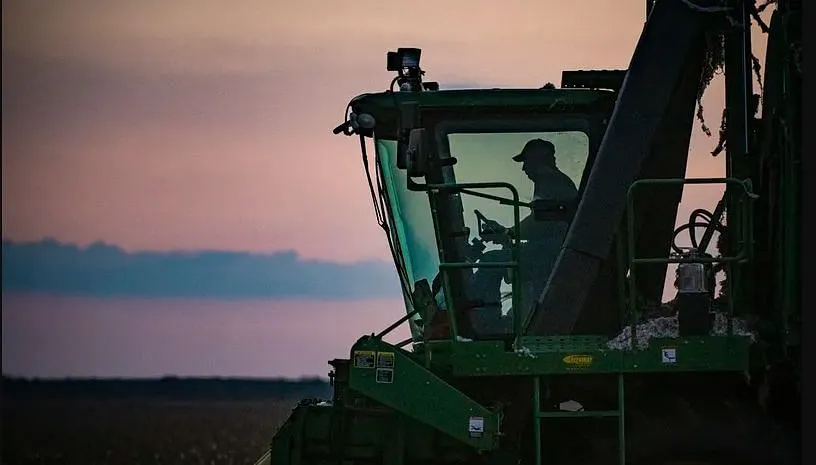BY DR. IMMAD A SHAH and DR. NOOR UL ISLAM WANI
Ask Siri to call someone, tell Alexa to shut off the lights, or you have just been recommended a film or a web-series by Netflix, all you are experiencing is what we call as an Artificial Intelligence (AI) in action. Artificial intelligence (AI) has been an integral part of our lives for a longer period than many of us do realise.
Among the new technologies that can solve agricultural problems, AI stands out amongst all. AI includes robotics, computer vision, and machine learning etc.
From agricultural robotics to soil and crop surveillance and predictive analytics, artificial intelligence plays an integral role in the agricultural industry’s struggle for future food sustainability in the face of climate change.
AI platform enables livestock and crop producers and processors to quickly and easily increase efficiency, improve decision making, and realise more revenue, eliminate costly inaccuracies in manual control, quantification and analysis, increase process speed, and yields by employing new solutions and obtaining the results in a few days as against months and years together vis-a-vis conventional methods. Let us have a look at a few applications of Artificial Intelligence:
Precision livestock counting
The AI enables monitoring transport on and off, feed entrances and exits, and automates animal detection and livestock numbers across several locations. It also allows integration of information into the operational/financial systems, digitisation of existing processing processes, and management of auditable data records.
Quality assurance of harvesting and processing
AI allows the implementation of best practices based on the vision to ensure the quality and safety of products with precision and efficiency along with the detection of real-time hazards caused by human handlings such as foreign objects from the production environment, equipment, and inputs. It helps to monitor processes and safety compliance and automate warnings of potential risks and contaminants.
Detection of ripeness of vegetables/fruits
AI enables automatic detection and assessment of the maturity of fruit and vegetables to improve genetics, cultivation, and quality control processes. It also helps to inspect and measure the levels and grade of visual derivatives, including size, shape, the colour of firmness, bruises, blisters (fruit taste, sweetness, etc.), and overall condition. Assisting genetic selection for high quality & longer shelf life is one of the beauties of AI.
Monitoring health of livestock
Early detection and accurate response prediction and intervention to understand the health of individuals and livestock populations with continuous visual data-driven insights are what AI can do. It also enables livestock feeding and care to be monitored, and evaluated by gait and size. Using AI, livestock can be identified for health data through facial recognition and combined with biometrics and genetic data.
Classification and quality control of the packaging of the product
AI allows organisations to transform the commitment to quality and customer satisfaction by automating, monitoring, and tracking classifications and packaging with visual AI. By using AI, organisations can analyse images and videos to evaluate the quality of products, while ensuring that the packaging and labelling of products are free of defects and errors.
Disease and pest diagnosis in crops
Disease and pest attack is the main problem of agriculture. Due to this, the quality and quantity of agriculture produce decreases thereby posing a huge threat to the food security. AI plays a highly significant role in disease and pest detection in agriculture crops. AI diagnoses the diseases and pests utilising the image processing and machine learning techniques.
Weed control in crops
AI sensors can detect the weed affected areas in the crop fields and can precisely spray the herbicides in the right region reducing the usage of herbicides.
Agriculture robots
AI based agricultural robots are used in different countries in harvesting the huge volumes of crops at a very faster speed and without much wastage. All in all, Artificial Intelligence is taking over all other traditional technologies at an outstanding pace. It is simply making this world a better place to live. AI powered solutions will not only enable the farmers to improve the management practices but will also go a long way in improving the quality, quantity and subsequently the marketability of their crop harvest.
Dr. Immad A Shah is working as a Lecturer at the Division of Agricultural Statistics, Sher-e-Kashmir University of Agricultural Sciences and Technology of Kashmir &
Dr. Noor-ul-Islam Wani is working as Junior Agriculture Extension Officer
at the J&K APD.
Disclaimer: The views and opinions expressed in this article are the personal opinions of the author.
The facts, analysis, assumptions and perspective appearing in the article do not reflect the views of GK.






